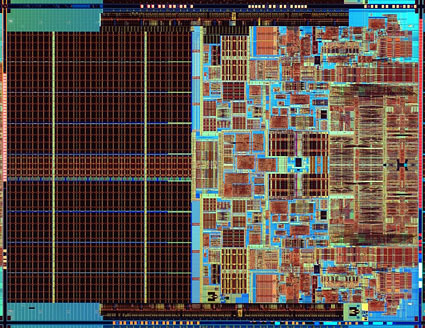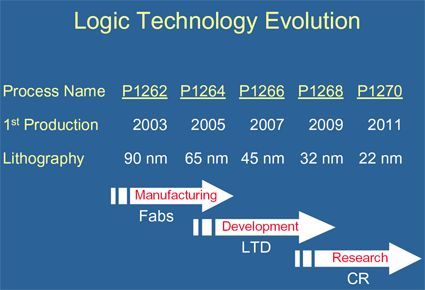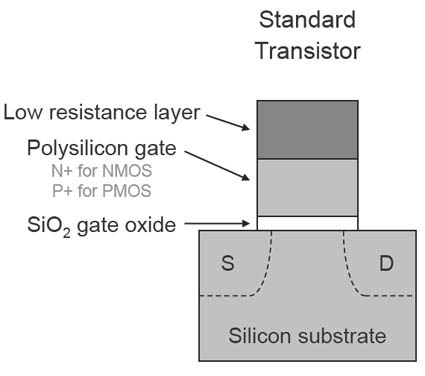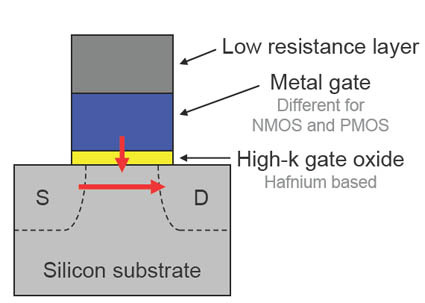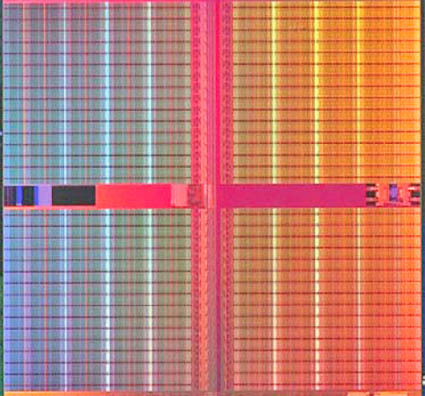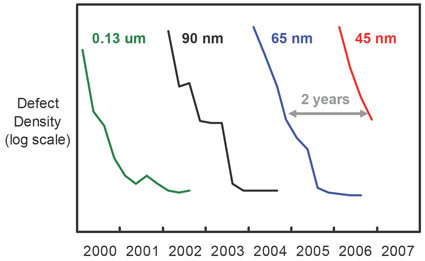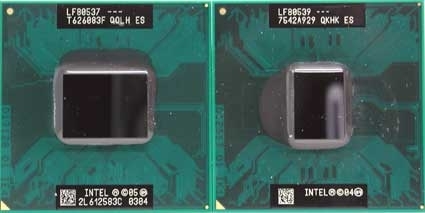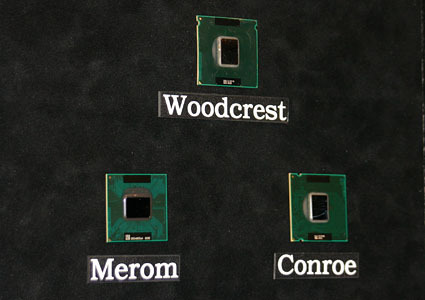Intel releases 45nm processor details
Die-image of Intel's first 45 nm processor, codenamed "Penryn". The processor has a total of 410 million transistors, which compares to ...
Die-image of Intel’s first 45 nm processor, codenamed "Penryn". The processor has a total of 410 million transistors, which compares to ...
.... 291 million transistors in the current 65 nm Core 2 Duo processor generation. The increased transistor count is a direct result of the smaller transistors. As Penryn is an upgrade to the existing Core micro architecture the die layouts look very simi
.... 291 million transistors in the current 65 nm Core 2 Duo processor generation. The increased transistor count is a direct result of the smaller transistors. As Penryn is an upgrade to the existing Core micro architecture the die layouts look very simi
A quick look at the manufacturing roadmap: 65 nm processors are in production since the second half of 2005. Intel refers to this process as P1264. P1266 will be sampling soon, we hear, and go into mass production towards the end of this year. If you are
A quick look at the manufacturing roadmap : 65 nm processors are in production since the second half of 2005. Intel refers to this process as P1264. P1266 will be sampling soon, we hear, and go into mass production towards the end of this year. If you are
What makes Penryn especially interesting, is the introduction of a heavily modified transistor technology. This is a simplified layout of a standard transistor as it was used for the past 40 years. Starting on the top, there is the gate electrode as condu
What makes Penryn especially interesting, is the introduction of a heavily modified transistor technology. This is a simplified layout of a standard transistor as it was used for the past 40 years. Starting on the top, there is the gate electrode as condu
The transistors used in the 45 nm processors will transition to a high-k and metal gate transistor, replacing the polysilicon gate and gate oxide layer. Intel said it is using a Hafnium-based material for the high-k gate oxide layer, but the company decli
The transistors used in the 45 nm processors will transition to a high-k and metal gate transistor, replacing the polysilicon gate and gate oxide layer. Intel said it is using a Hafnium-based material for the high-k gate oxide layer, but the company decli
Current flow within the transistor and silicon channel (source to drain). Intel claims that the transistor design increases drive current by 20%, resulting in a 20% performance increase over the preceding design used in 65 nm processors. At the same clock
Current flow within the transistor and silicon channel (source to drain). Intel claims that the transistor design increases drive current by 20%, resulting in a 20% performance increase over the preceding design used in 65 nm processors. At the same clock
Image of the transistor. From top to bottom: Low resistance layer, metal gate (consisting of two different materials), high-k oxide layer, silicon channel.
Image of the transistor. From top to bottom : Low resistance layer, metal gate (consisting of two different materials), high-k oxide layer, silicon channel.
Get Tom's Hardware's best news and in-depth reviews, straight to your inbox.
Intel says that the high-k transistor technology was used already in its 45 nm SRAM chip announced in early 2006.
Intel says that the high-k transistor technology was used already in its 45 nm SRAM chip announced in early 2006.
Production is on track, says Intel: The reduction of defects is comparable to the success the company had with the 65 nm generation.
Production is on track, says Intel : The reduction of defects is comparable to the success the company had with the 65 nm generation.
The direct predecessor of Penryn: The 65 nm Core 2 Duo with Merom core (left) and the 65 nm Core Duo (Yonah core).
The direct predecessor of Penryn : The 65 nm Core 2 Duo with Merom core (left) and the 65 nm Core Duo (Yonah core).
The complete Core 2 Duo family will be replaced with Penryn. Intel says that it will release one dual-core mobile processor (succeeding Merom), one dual-core desktop chip (succeeding Conroe) and one dual-core volume server CPU (succeeding Woodcrest).
The complete Core 2 Duo family will be replaced with Penryn. Intel says that it will release one dual-core mobile processor (succeeding Merom), one dual-core desktop chip (succeeding Conroe) and one dual-core volume server CPU (succeeding Woodcrest).
Tom's Hardware is the leading destination for hardcore computer enthusiasts. We cover everything from processors to 3D printers, single-board computers, SSDs and high-end gaming rigs, empowering readers to make the most of the tech they love, keep up on the latest developments and buy the right gear. Our staff has more than 100 years of combined experience covering news, solving tech problems and reviewing components and systems.

